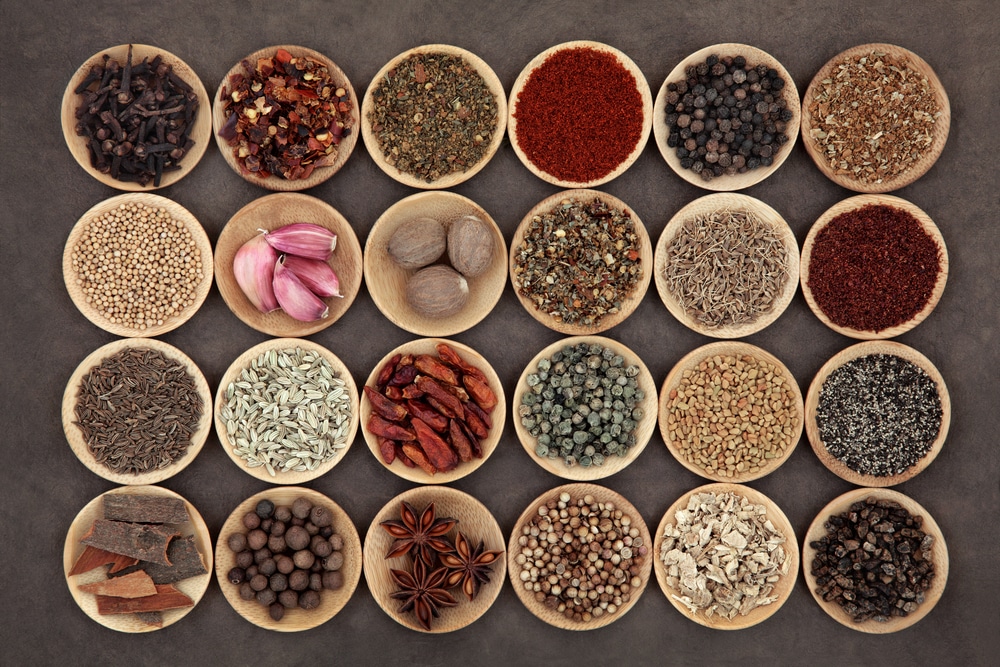Table of Contents
Attention flavor enthusiasts! Ready to up your culinary game? Middle Eastern spices are your passport to a world of taste where every dish tells a story of aromatic adventure. These Eastern spices pack a punch with their spicy, pungent, and zesty profiles that can turn any meal into an unforgettable dish. So, folks, I think it’s time to celebrate the diversity of these spices. Being a cooking aficionado myself, I love trying new ingredients and spices. So, let’s talk about some of the top Middle Eastern spices to make your kitchen a spice-laden paradise.
1. Cumin
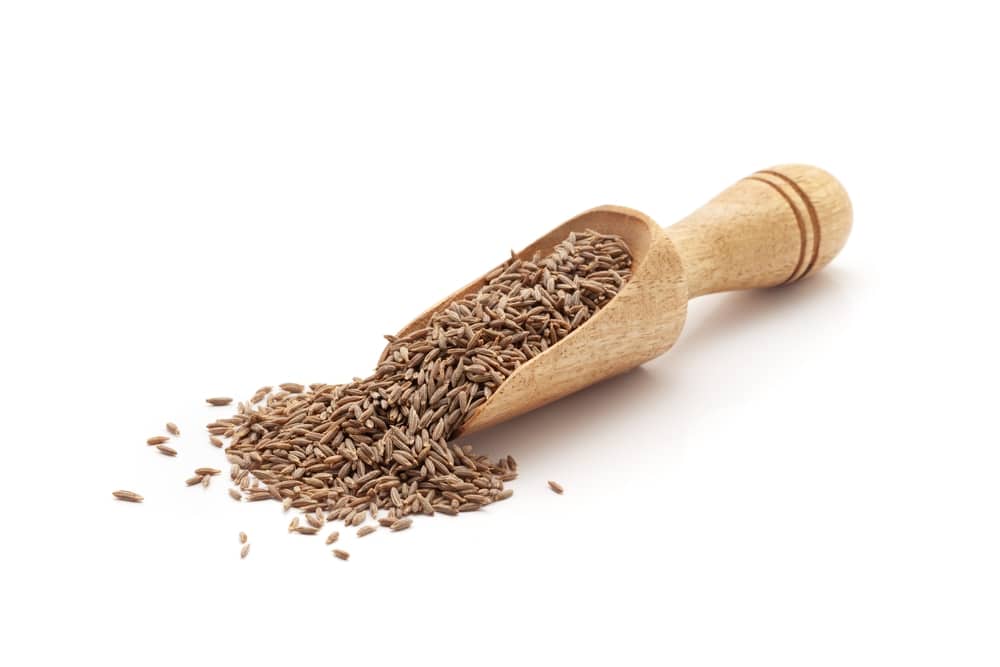
A staple in the culinary world, cumin is one of the most widely used Eastern spices in Middle Eastern cuisine. It has a warm, earthy flavor with a hint of citrus, making it perfect for seasoning meat dishes, stews, and rice dishes.
- Where it’s used: Cumin is well-known in spice blends like Baharat and za’atar and is commonly added to soups, bread, and various meat dishes.
2. Sumac
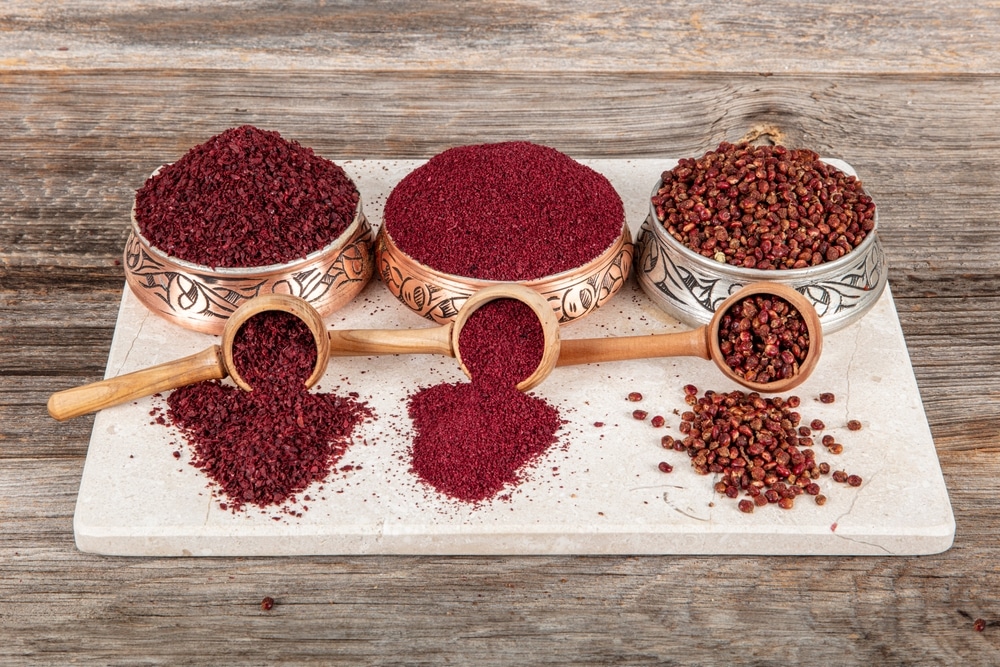
Folks, sumac is a tangy spice with a lemony flavor, made from dried and ground berries. Chefs often use it as a seasoning or garnish, sprinkling it over salads, grilled meats, and dips like hummus and baba ghanoush.
- Where it’s used: Sumac adds a bright, zesty note to dishes and is commonly used in Middle Eastern salads like Fattoush and as a finishing touch on kebabs and roasted vegetables.
3. Coriander
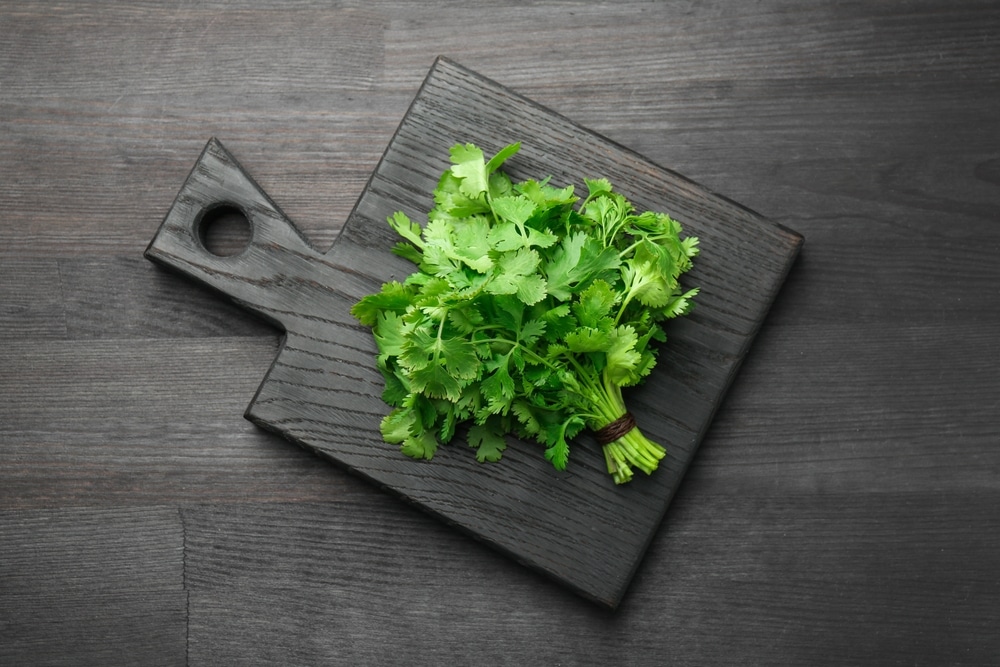
Not only do these seeds have a citrusy, slightly sweet flavor, but they also pair well with cumin and other warm spices. Ground coriander is commonly used in spice rubs for meats, as well as in soups and curries.
- Where it’s used: Coriander is a key ingredient in Middle Eastern spice blends like dukkah and Baharat. Cooks often use it in dishes such as kofta and shakshuka.
4. Turmeric
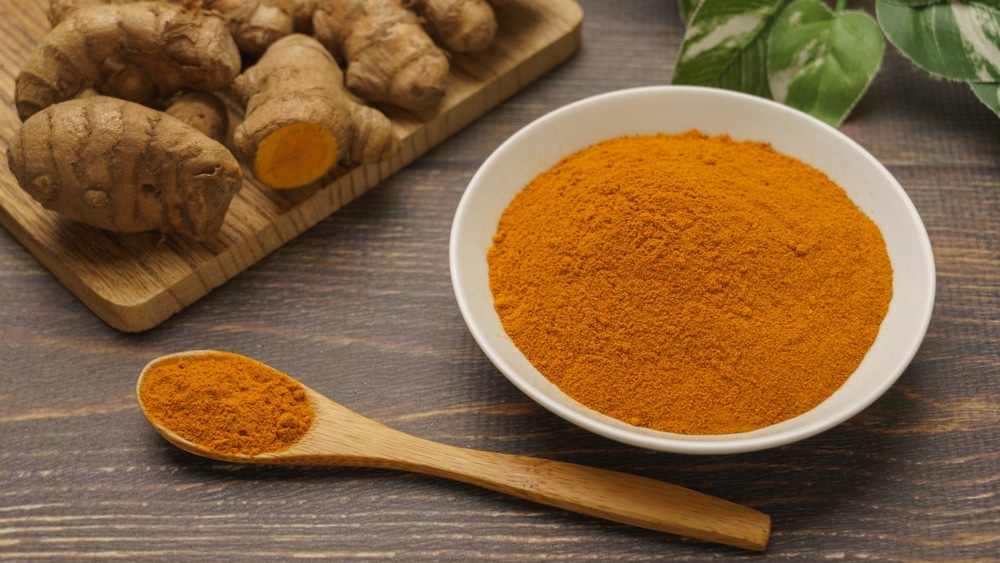
I personally love the color and zest it brings to the dishes. Turmeric boasts a vibrant yellow color and an earthy, slightly bitter taste. Moreover, it’s a key ingredient in many Middle Eastern spice mixes, including ras el hanout and curry powder.
- Where it’s used: Chefs often use turmeric to season rice dishes like pilaf, tagines, and stews, adding both color and depth of flavor.
5. Cardamom
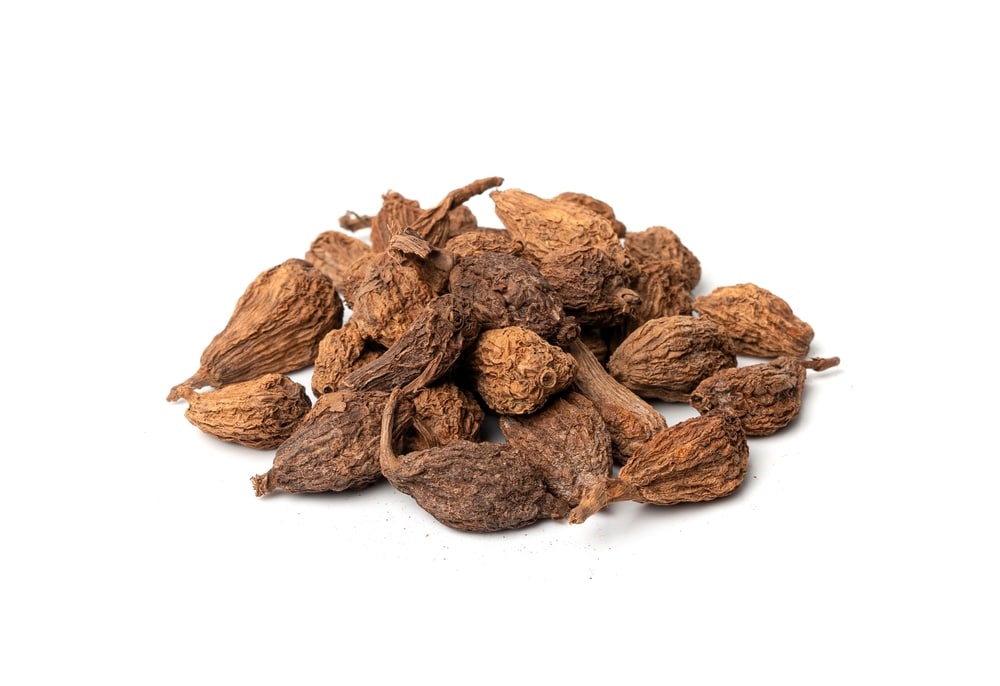
Most of us might have only heard of cardamom tea and never thought where else this spice could be used. Folks, cardamom is a fragrant spice with a sweet, floral flavor that’s used in both savory and sweet dishes. However, in Middle Eastern cooking, chefs often add it to coffee, desserts, and rice dishes like kabsa.
- Where it’s used: Cardamom is used in spiced coffee (like Arabic coffee), sweet pastries, and in rice dishes and stews to add a distinctive aroma and flavor.
6. Cinnamon
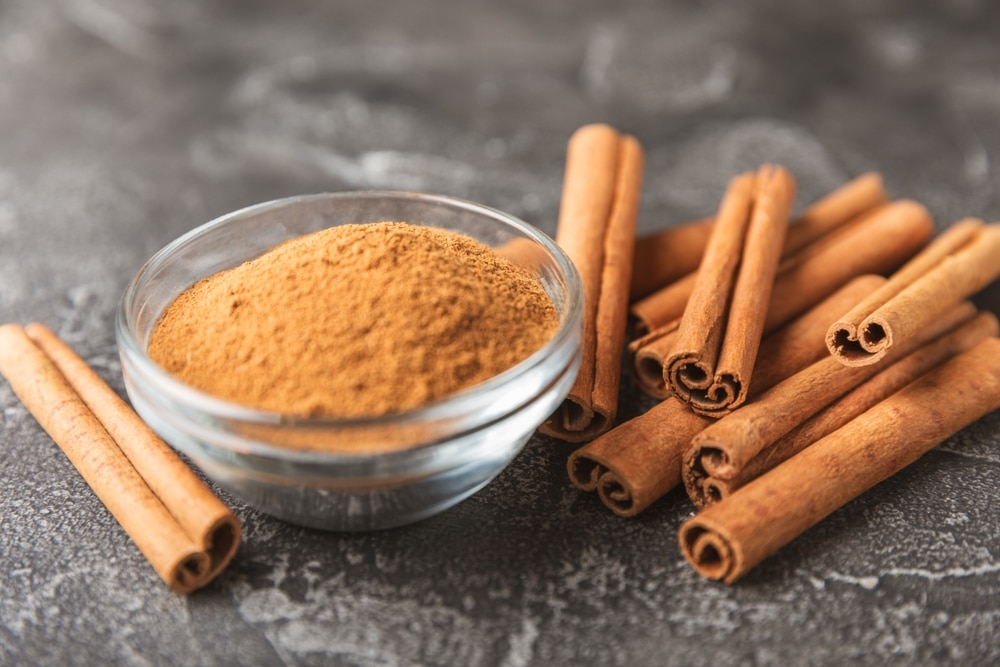
Hands down, cinnamon is one of the most versatile ingredients, and chefs would agree with me on this. Cinnamon, with its sweet and spicy flavor, enhances a variety of Middle Eastern dishes as a versatile spice. Moreover, you commonly find it in spice blends like Baharat and Ras El Hanout, where it flavors meat dishes, rice dishes, and desserts like baklava.
- Where it’s used: Chefs use cinnamon in both savory dishes like stews and rice dishes and in sweet treats such as Ma’amoul and knafeh.
7. Allspice
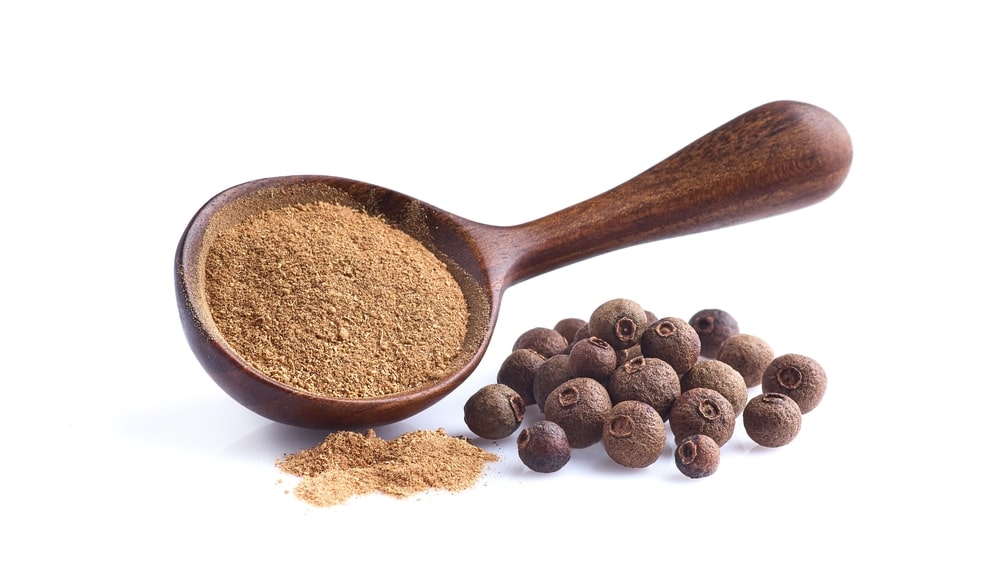
Despite its name, Allspice is a single spice with a flavor that combines the notes of cinnamon, nutmeg, and cloves. However, in Middle Eastern cuisine, cooks often use it in kebabs and stews, especially in meat dishes.
- Where it’s used: Chefs use allspice as a key ingredient in kofta seasoning for dishes like mujadara and various meat-based stews.
If you want to go through recipe variations using Allspice, check out this article.
8. Za’atar
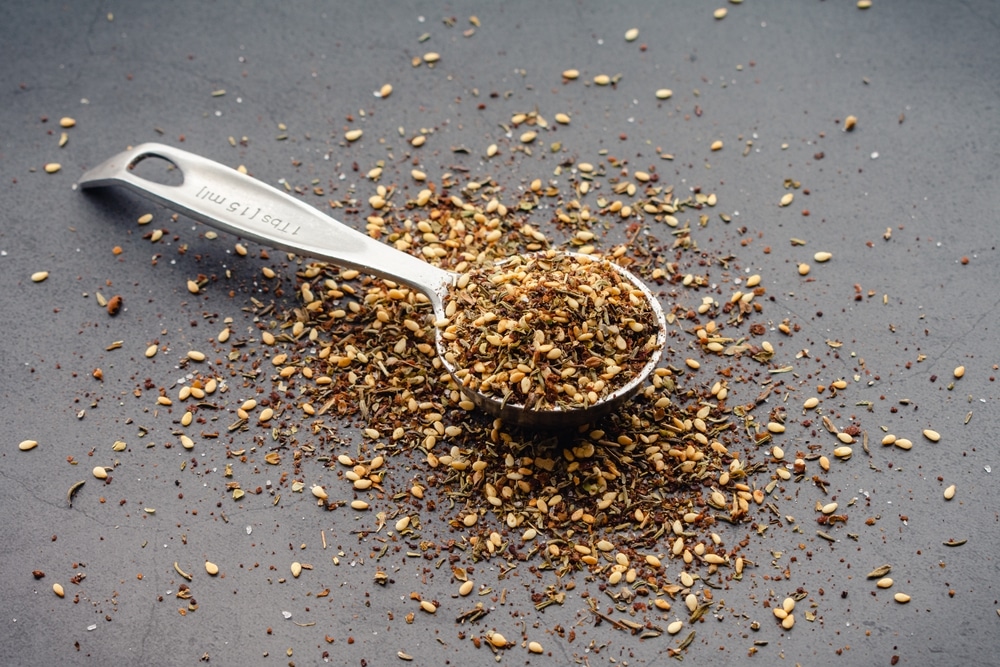
A unique Middle Eastern spice mix, Za’atar combines dried thyme, sesame seeds, sumac, and salt. Moreover, Za’atar delivers a tangy, nutty flavor and seasons meats, vegetables, and flatbreads.
- Where it’s used: Chefs commonly sprinkle Za’atar over salads, season roasted vegetables with it, or mix it with olive oil to create a flavorful dip for bread.
Calorie Content of Spices
Below is a table for the calorie content of each spice discussed in the article:
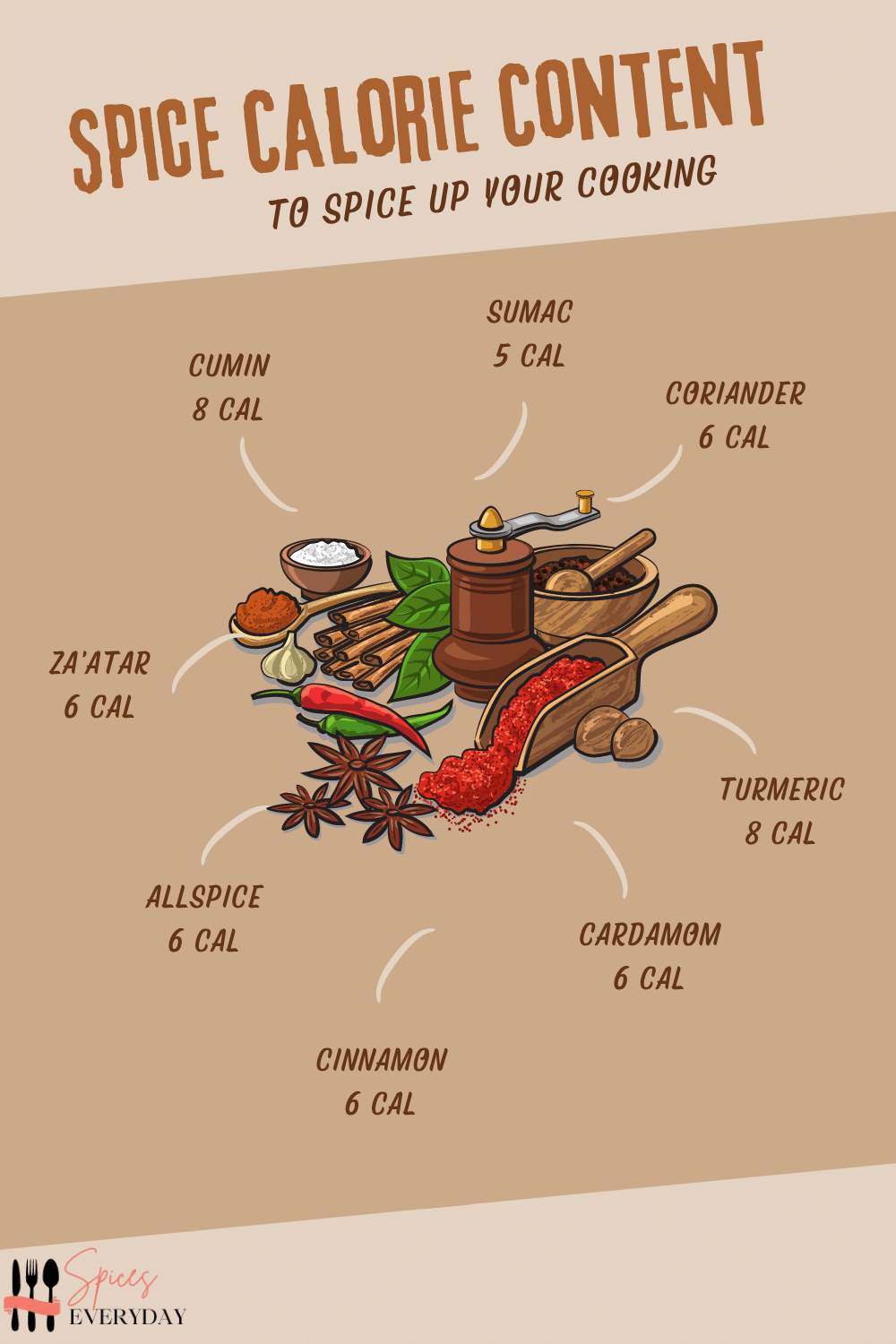
Final Words
Summing up what has been discussed so far, the article covered eight spices that are essential for crafting the authentic flavors of Middle Eastern cuisine. Whether you’re making a traditional dish or experimenting with new recipes, adding these spices will enhance your meals. However, using them creatively can further elevate your dishes with depth, aroma, and vibrant flavor. So, folks embrace these spices, and you’ll bring the rich culinary heritage of the Arab world into your kitchen.
Authentic Flavors!

